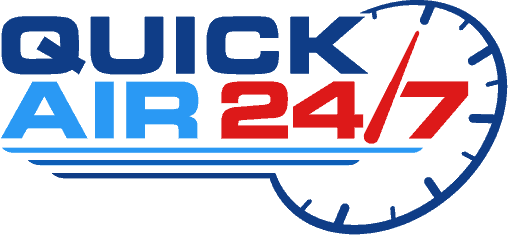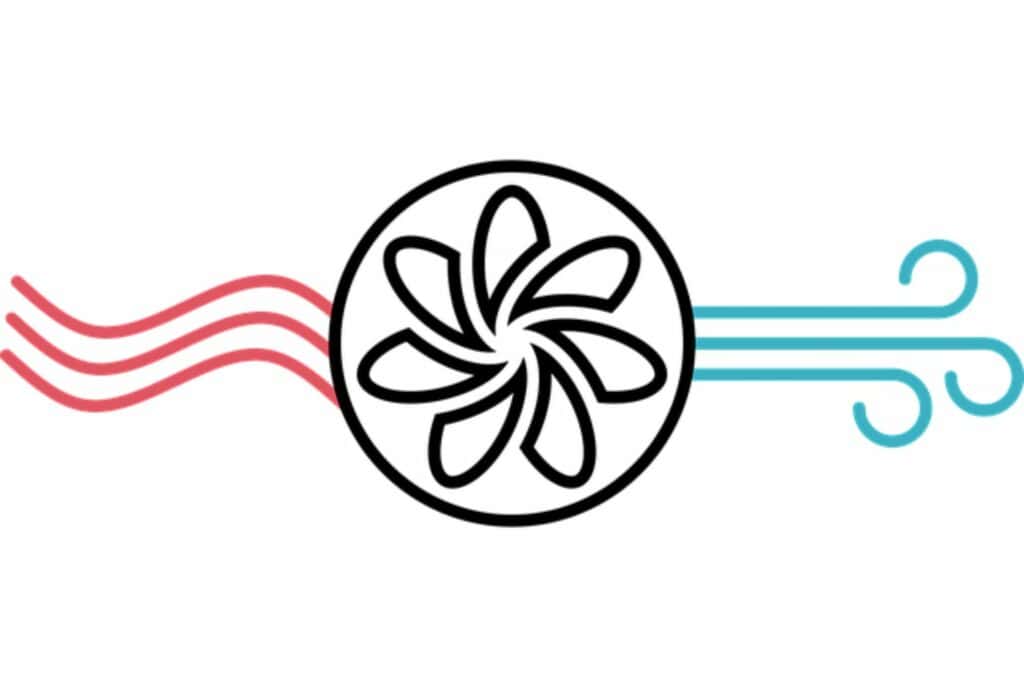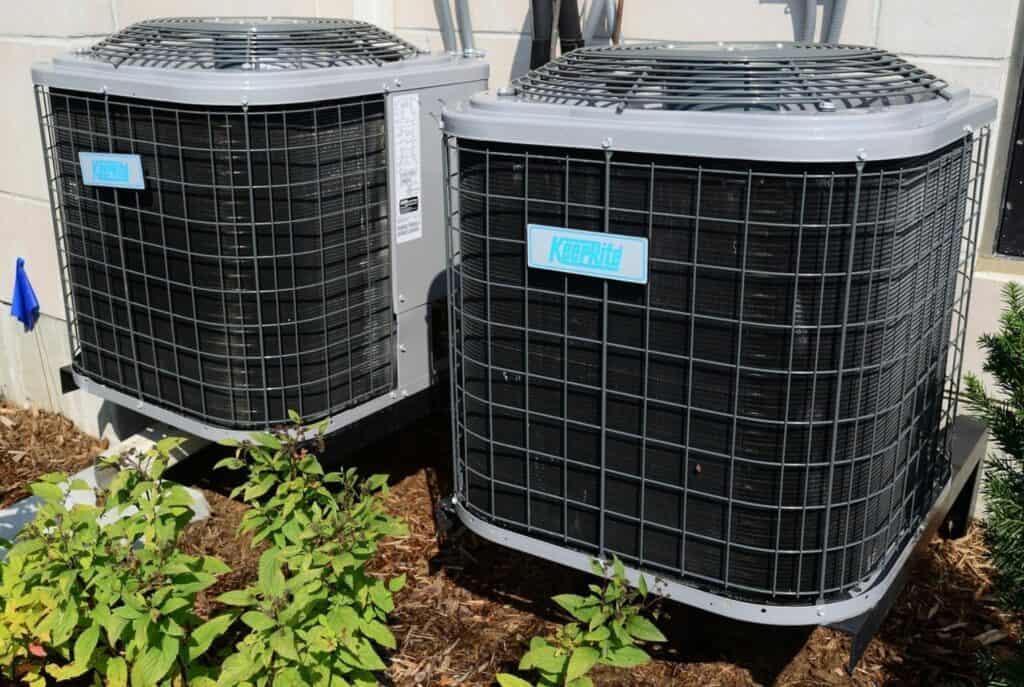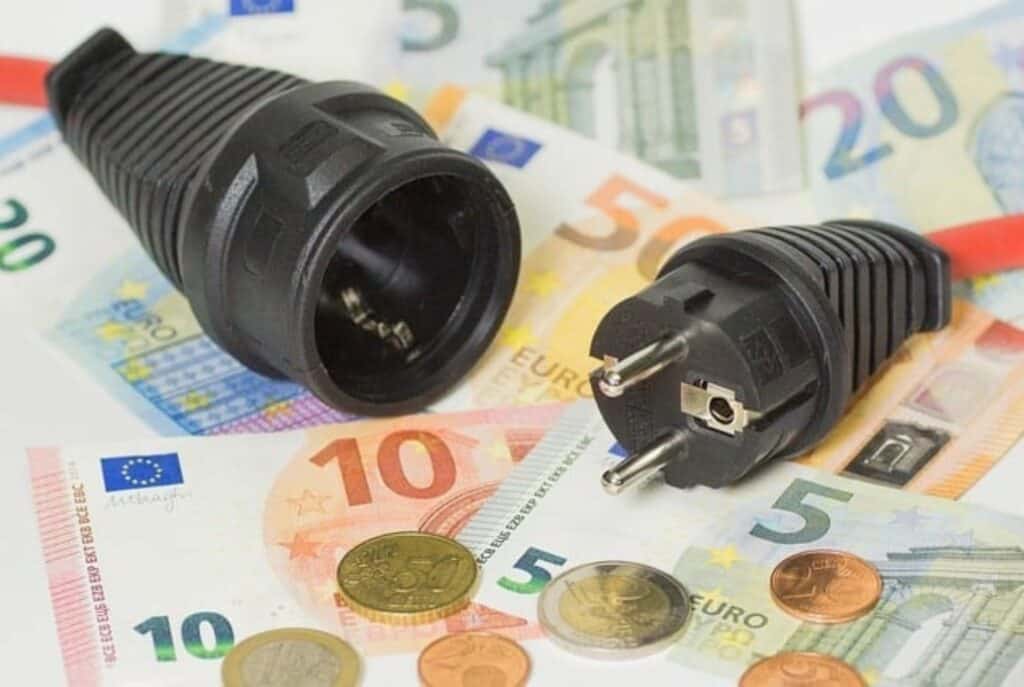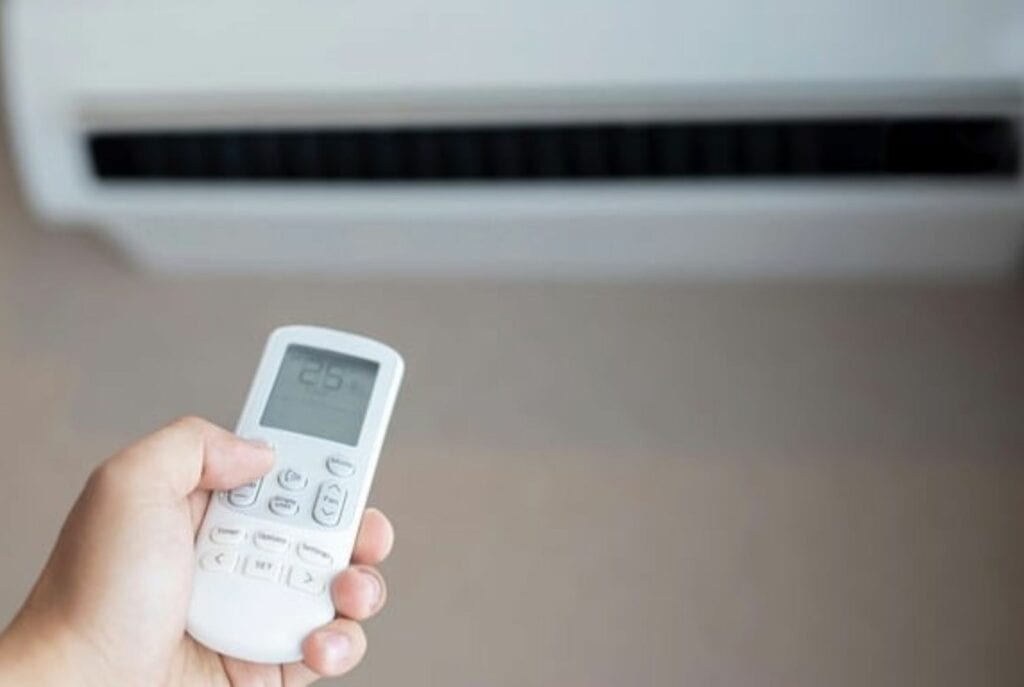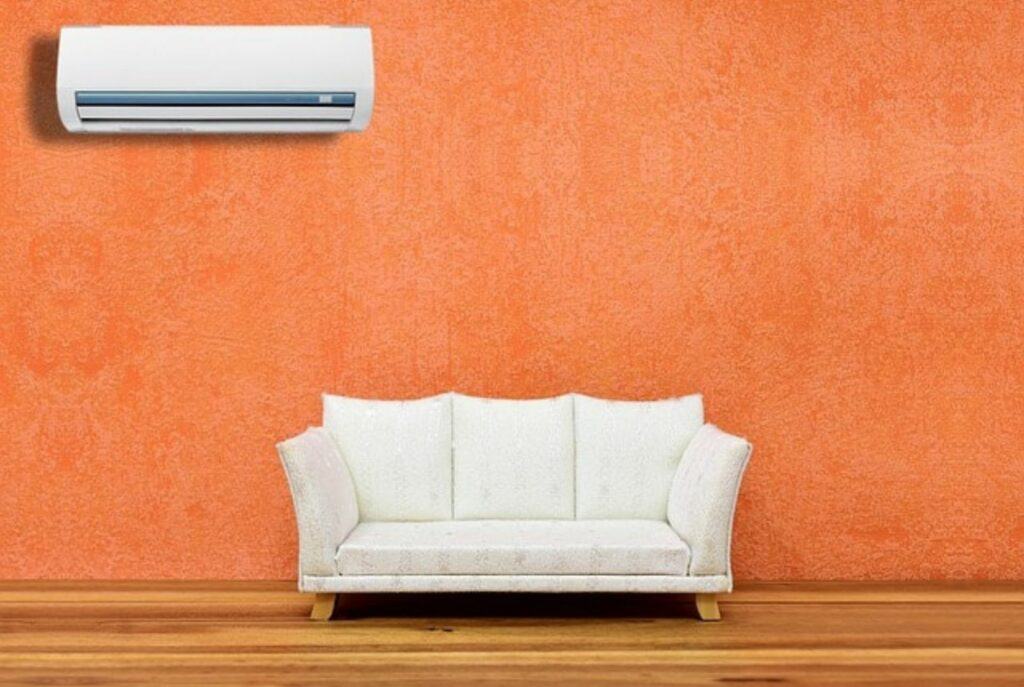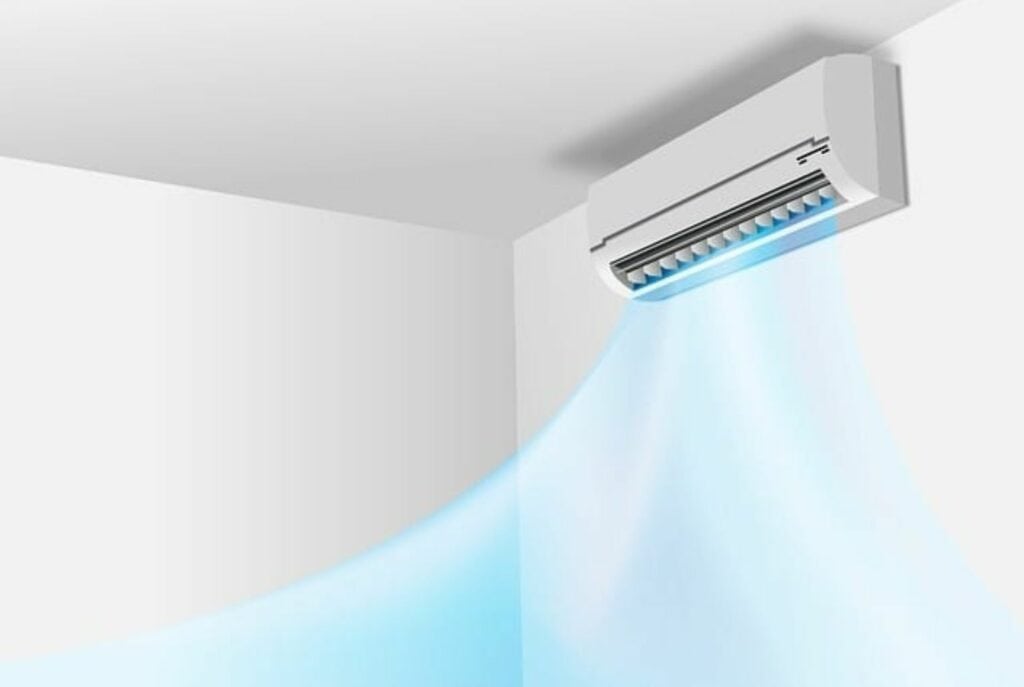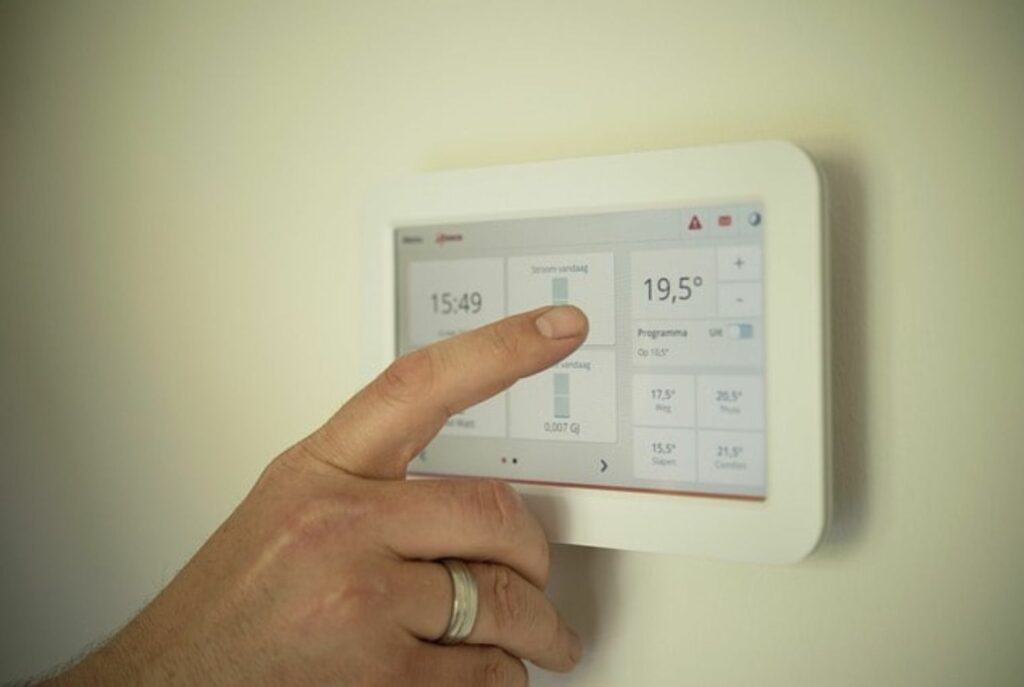Wall-mounted air conditioner units offer flexibility to many homeowners and businesses seeking efficient, cost-effective cooling solutions. These units provide various benefits and drawbacks, so weighing the pros and cons before deciding is essential.
Here, we’ll delve into the key advantages and disadvantages of wall-mounted AC units, how they function, and most importantly, how they stack up against other air conditioning systems. This comparison will provide you with a comprehensive understanding of your cooling options.
How Wall-Mounted Air Conditioners Work
Wall-mounted air conditioners, also known as ductless mini-split systems or a wall-mounted ductless unit, consist of two main components: an indoor unit and an outdoor compressor.
The indoor unit is mounted high on a wall inside the room and is connected to the outdoor compressor via refrigerant lines and electrical wiring. The indoor unit features a fan and evaporator coils filled with refrigerant.
When the system is activated, the indoor unit pulls warm air from the room through an intake grille. This warm air is then passed over the evaporator coils, where the refrigerant absorbs the heat from the air, causing the refrigerant to evaporate and create cool air. The cool air is then blown back into the room through an outlet, effectively lowering the room’s temperature.
Meanwhile, the outdoor compressor plays a crucial role in the cooling process. The refrigerant, now a warm gas after absorbing heat indoors, travels through the refrigerant lines to the outdoor unit. The compressor pressurizes the refrigerant gas, increasing its temperature further before passing it through condenser coils. A fan in the outdoor unit blows outside air over these coils, dissipating the absorbed heat into the environment and causing the refrigerant to condense back into a liquid state. This cooled liquid refrigerant then cycles back to the indoor unit to repeat the process.
This system allows for cool air to travel to targeted areas without the need for ductwork, making it an efficient and flexible option for homes and offices. Ductless air conditioners can also be used for heating, using a reversible process where the outdoor unit absorbs heat from the outside air and transfers it inside, making them versatile for year-round climate control.
Different Types of Air Conditioning Systems
Choosing the right air conditioning unit for your home involves assessing your specific cooling needs, budget, and space requirements. With various options available, including central air systems, window units, portable ACs, and wall-mounted units, it’s important to understand the features and benefits of each type.
This guide will help you navigate the key factors to consider, ensuring you select an AC unit that provides optimal comfort and efficiency for your home.
1. Central Air Conditioning Central air conditioning systems are designed to cool entire homes or large buildings. They use a network of ducts to distribute cooled air from a central unit to various rooms. While highly effective for whole-house cooling, these systems are more expensive to install and maintain compared to wall-mounted units.
2. Window Air Conditioners Window air conditioners are compact units that fit into a window frame. They are ideal for cooling single rooms and are relatively inexpensive and easy to install. However, they can obstruct views, block natural light, and may not be as energy-efficient as wall-mounted units.
3. Portable Air Conditioners Portable air conditioners are standalone units that can be moved from room to room. They require a venting hose to expel warm air outside, typically through a window. These units offer flexibility but can be less efficient and noisier compared to other types of air conditioners.
4. Wall-Mounted Air Conditioners Wall-mounted AC units, as described earlier, provide efficient cooling for specific areas or rooms without requiring ductwork. They are quieter and more energy-efficient than window or a portable indoor unit but involve a higher initial cost and installation process.
Pros of a Wall-Mounted Air Conditioner
1. Efficient Cooling Wall-mounted air conditioner units are designed to cool specific areas quickly and effectively. They are ideal for targeted cooling needs, such as cooling a bedroom, living room, or office, providing consistent and rapid temperature control exactly where it’s needed.
2. Space-Saving Design Installed high on walls, these air conditioners free up valuable floor and window space, making them suitable for smaller rooms or apartments. This design also keeps them out of the way of everyday activities, helping to maintain the functionality and aesthetics of the living space.
3. Easy Installation Compared to central air systems, wall-mounted air conditioners are simpler and less invasive to install. Many units come with comprehensive installation kits and can often be set up without professional assistance, saving on installation costs and time.
4. Energy Efficiency Modern wall-mounted air conditioners are highly energy-efficient, often featuring inverter technology. This technology adjusts the compressor speed to maintain the desired temperature, reducing energy consumption and lowering utility bills. Their efficiency makes them a cost-effective choice for long-term use.
5. Quiet Operation Wall-mounted air conditioners are designed to operate quietly, making them suitable for noise-sensitive environments like bedrooms, living rooms, and offices. The indoor components are engineered to minimize noise, ensuring a comfortable and peaceful atmosphere.
6. Versatility Many wall-mounted air conditioners offer both cooling and heating functions, providing year-round climate control. This dual functionality makes them versatile and convenient, eliminating the need for separate heating and cooling systems.
Cons of a Wall-Mounted Air Conditioner
1. Initial Cost The initial purchase price of wall-mounted air conditioners can be higher than that of a window or portable indoor unit. High-quality models with advanced features and greater energy efficiency further increase the upfront cost, which may be a consideration for budget-conscious buyers.
2. Aesthetic Impact While wall-mounted air conditioners save space, they are visible on walls and can disrupt the decor of a room. Their presence needs to be carefully planned to minimize visual impact and ensure they blend as seamlessly as possible with the room’s design.
3. Limited Coverage Wall-mounted air conditioners are designed to cool specific areas rather than entire homes. For larger spaces or multiple rooms, multiple units may be necessary, which increases both the cost and complexity of installation and maintenance.
4. Installation Requirements Installing a wall-mounted AC unit requires making holes in the walls for mounting and connecting the unit to the outside. This may not be feasible for all building types, such as certain rental properties or buildings with restrictive construction codes.
5. Maintenance Needs Regular maintenance is essential to ensure optimal performance of wall-mounted air conditioners. This includes cleaning filters, checking refrigerant levels, and occasionally servicing the unit. Neglecting maintenance can lead to decreased efficiency and potential breakdowns.
6. Dependency on External Conditions The external components of wall-mounted air conditioners can be affected by extreme weather conditions. This may require additional protection
Heat Pumps and Heat Pump Functionality
While wall-mounted air conditioners do not inherently require a heat pump, many models include heat pump functionality, allowing them to provide both heating and cooling, which adds versatility and makes them useful year-round.
However, they come with higher initial costs and installation requirements, and their visible presence on walls may affect room aesthetics.
The Role of Heat Pumps in Wall-Mounted AC Units
Heat pumps are integral to the functionality of many wall-mounted air conditioning units, especially those designed to offer both cooling and heating capabilities.
A heat pump is a device that transfers heat energy from one place to another, allowing the unit to either cool or heat a space. Here’s how they are connected to wall-mounted AC units:
Cooling Mode
In cooling mode, the heat pump operates like a standard air conditioner.
The indoor unit absorbs warm air from the room and passes it over the evaporator coils filled with refrigerant. The refrigerant absorbs the heat, cools the air, and circulates the cooled air back into the room.
The absorbed heat is transferred outside through the refrigerant lines to the outdoor compressor unit, where it is dissipated.
Heating Mode
In heating mode, the process is reversed.
The heat pump extracts heat from the outside air, even in cold weather, and transfers it inside. The outdoor unit absorbs the heat from the air and sends it through the refrigerant lines to the indoor unit.
The indoor unit then releases the heat into the room, providing warmth. This dual functionality makes heat pump-equipped wall-mounted AC units highly versatile for year-round use.
Benefits of Heat Pumps in Wall-Mounted AC Units
Energy Efficiency
Known for their energy efficiency, they use less electricity compared to traditional electric heaters because they move heat rather than generate it. This efficiency results in lower energy bills, especially in moderate climates.
Space-Saving
Integrating a heat pump into a wall-mounted air conditioner unit eliminates the need for separate heating and cooling systems, saving space and reducing the complexity of managing multiple appliances.
Consistent Comfort
With a heat pump, indoor units can provide consistent comfort throughout the year. Users can easily switch between heating and cooling modes to maintain a comfortable indoor environment regardless of the season.
Considerations
Initial Cost
Wall-mounted AC units with heat pump functionality tend to be more expensive than basic cooling-only models. The initial investment is higher, but the long-term energy savings and convenience can offset this cost.
Climate Limitations
Heat pumps are most effective in moderate climates. In extremely cold temperatures, their efficiency can decrease, and supplemental heating might be necessary.
Conclusion
Wall-mounted AC units offer efficient, space-saving, and energy-efficient cooling solutions for specific areas. However, they come with drawbacks such as higher initial costs, aesthetic impact, and limited coverage. Comparing these units to other air conditioning systems—central, window, and portable—can help you determine the best fit for your cooling needs.
By evaluating the pros and cons in the context of your specific circumstances, you can make an informed decision about whether a wall-mounted AC unit is the right choice for you.
Contact Us
Are you considering an AC replacement or want to know more about your options? Quick Air 24/7 is your go-to solution, offering exceptional service and unbeatable prices. Contact our office to book a no-obligation estimate today. We stand by the quality of our products and services and we aim to win your trust for the long term.
